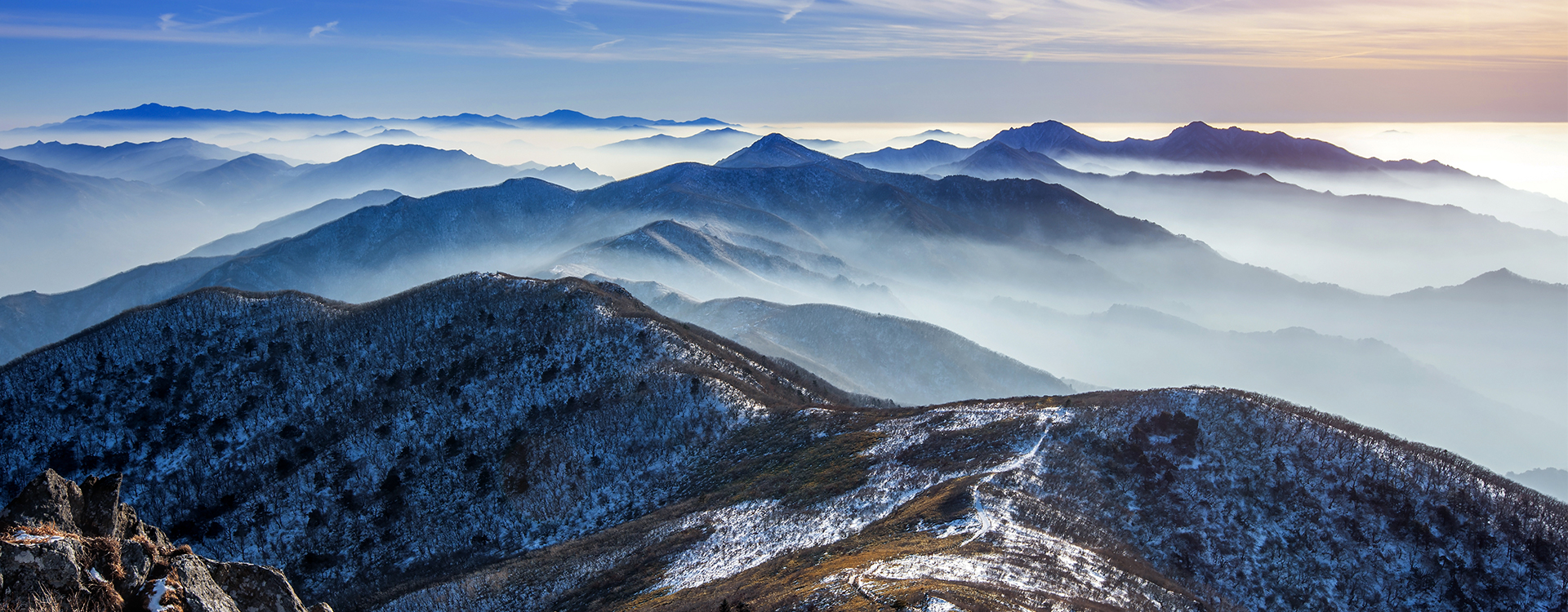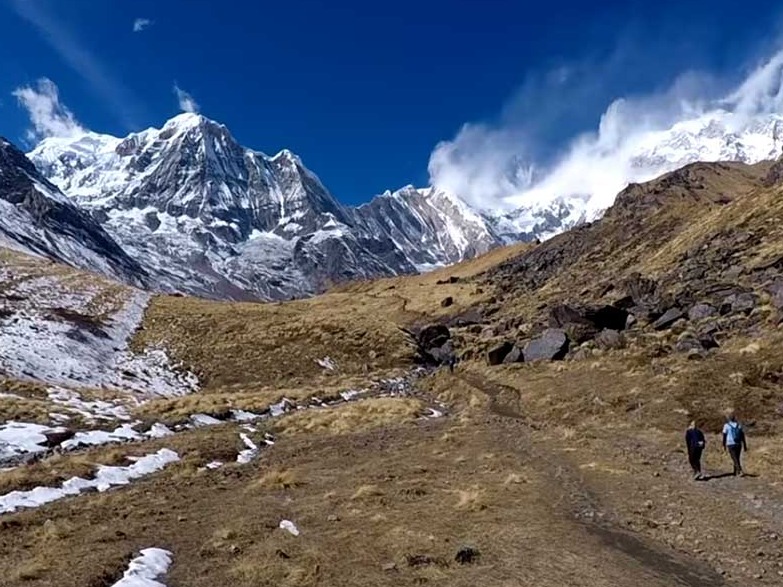- Annapurna Base Camp (ABC)
- Rara Lake
- Chitwan National Park
- Everest Base Camp (EBC)
- Ilam
- Bandipur
- Pokhara
- Langtang Valley
- Koshi Tappu Wildlife Reserve
- Phoksundo Lake (Shey Phoksundo National Park)
- Best Time To Visit Nepal for Naturalists
- Conclusion
- FAQs
- When does nature get optimum naturalness in traveling to Nepal?
- Is it necessary to hire a guide for trekking in Nepal?
- What should I pack for a nature trip to Nepal?
- Eco-friendly accommodation in Nepal?
- Is wildlife watching secure in Nepal's national parks?
- List some hidden natural paradises that can be experienced in Nepal.
- How to book a nature tour in Nepal?
Have you ever wondered how far one has to go to truly experience nature? In that case, welcome to Nepal, a veritable paradise for nature lovers! Nestled in the center of the grand Himalayan wall, among eight of the highest mountains, including the darling of trekkers and adventurers alike, Mount Everest. The other contrasting landscape of this land begins high up, where calm alpine valleys, roaring glacier-fed rivers, and dense tropical forests meet the lively national parks. Be it scrambling through rhododendron-covered trails, boating on one of Nepal's many clear lakes, or wildlife spotting in the many protected reserves, your adventure in nature will surely be an exhilarating one!
Good Vibes Adventure exists to inspire travelers to engage in a soul connection with nature and culture beyond mere sightseeing. For this purpose, we have selected a guide to 10 nature spots in Nepal every nature lover must certainly put on his/her bucket list. Let your next journey inspire, awaken, and fill you with good vibes.
Annapurna Base Camp (ABC)
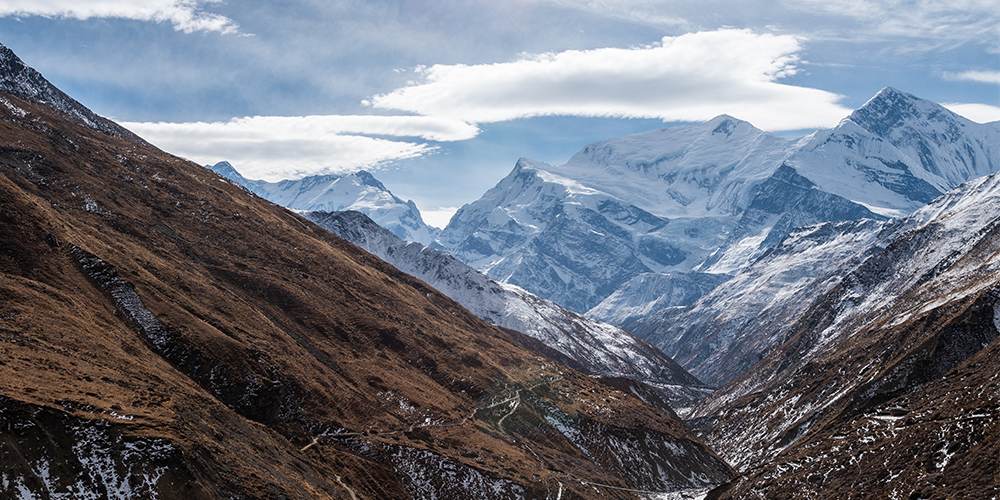
What a trek the Annapurna Base Camp trek in Nepal is! Lying down from mighty peaks, Annapurna I and the holy Machapuchare (Fishtail Mountain), the trek throws open such captivating scenarios—all highly complex alpine scenes, small terraced fields, and Gurung villages, very rich in local culture. A trek offering a great moderate adventure, natural beauty, and cultural immersion: for those who truly love outside nature trekking in Nepal, that's the haven where they want to be, at the heart of the Himalayas.
Reason for Going
- Go for a dip in the rhododendron forests lying underneath some of the steepest and most astonishing Himalayan peaks.
- Catch sweeping views of Annapurna I (8,091m) and Machapuchare (Fishtail).
- Walk onwards through Gurung settlements and terraced rice fields and on into alpine meadows.
- Primarily aimed at those trekkers seeking moderately good trekking on parts with a good degree of reward without extreme altitudes.
- Great in biodiversity, ranging from rhododendron forests to Himalayan wildlife.
Rara Lake
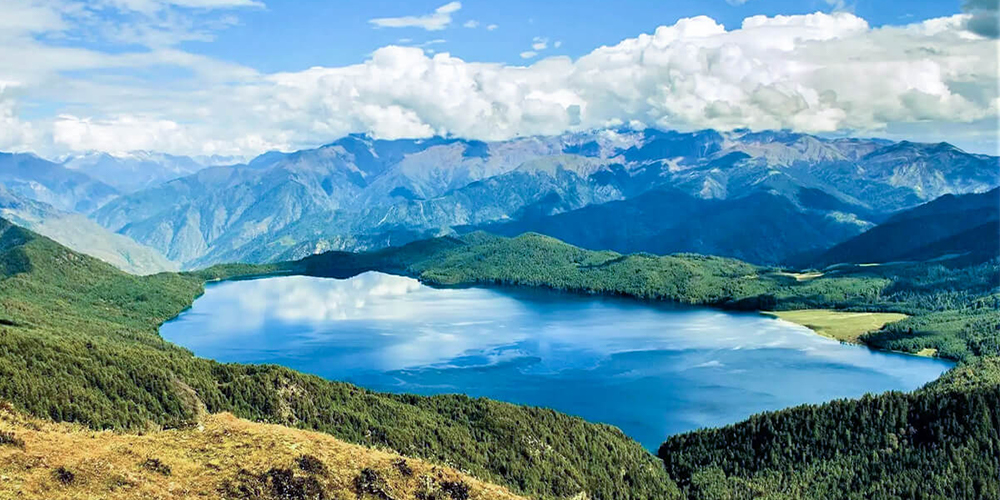
Rara Lake is the location found in the extreme northwest of the country. It has made quite a name for itself as being called the "Queen of Lakes" in Nepal. This lake is the largest in the country and lies at an elevation of 2,990m, and is engulfed or populated with dense pine forests and snow-peaked high mountains. It is situated in Rara National Park, which is well known for its biodiversity, where the area around the lake offers a well-earned restful environment for birdwatchers, botanists, and seekers of routes less traversed in Nepal. Perfect and secret for all nature lovers is this serene habitat and the clear waters of Lake Rara.
Reasons for Going:
- Explore the largest lake of Nepal: Silent looms silently in a pristine and isolated alpine area.
- Travel through Rara National Park to discover its flora and fauna: beautiful, quiet, isolated natural wonders.
- Crystal-clear blue water reflecting snow-capped mountains.
- Ideal camping, photogenic solitude, and the remote northwest.
- Off the beaten track for real wilderness seekers.
Chitwan National Park
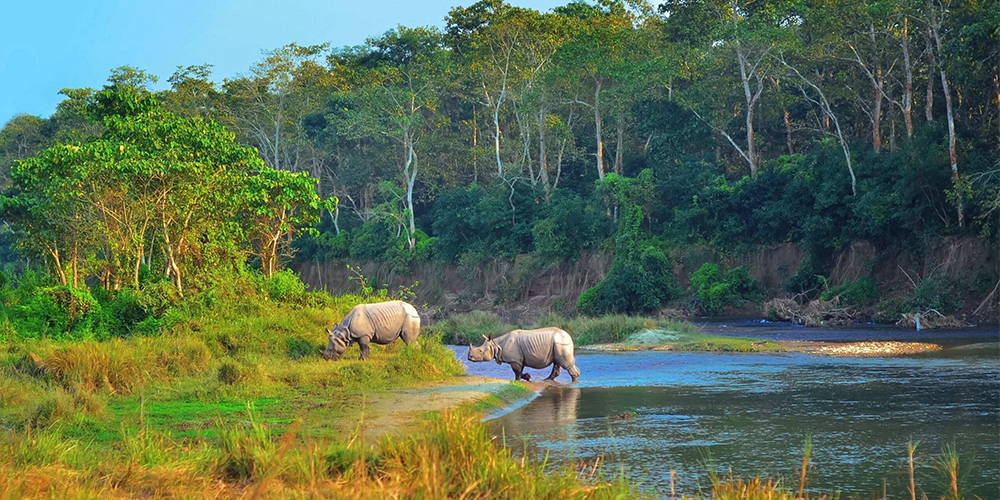
Wildlife buffs would say that Chitwan National Park is heaven on Earth. Famous for its thrilling jungle safaris to see the spying action of the one-horned rhinoceros, Bengal tigers, Asian elephants, and about 500 species of birds, this UNESCO World Heritage Site is located in southern Nepal. From drifting on the Rapti River in a canoe to guided walks through the jungle, right through to elephant breeding centers, the range of activities offered creates the complete wildlife experience in Chitwan. Being a major ecotourism destination, this one has to be included in any tour package offered for nature lovers in Nepal.
Reasons for Going:
- Witness a UNESCO Heritage Site brimming with jungle wildlife.
- Get to see one-horned rhinos, Bengal tigers, elephants, and crocodiles.
- Embark on thrilling jeep safaris, canoe rides, and walks in the jungle.
- The region is equally excellent for the birdwatcher, weighing the pros and cons, over five hundred bird species are found.
- Tharu culture is worth knowing, and eco-lodges are available for accommodation.
Everest Base Camp (EBC)
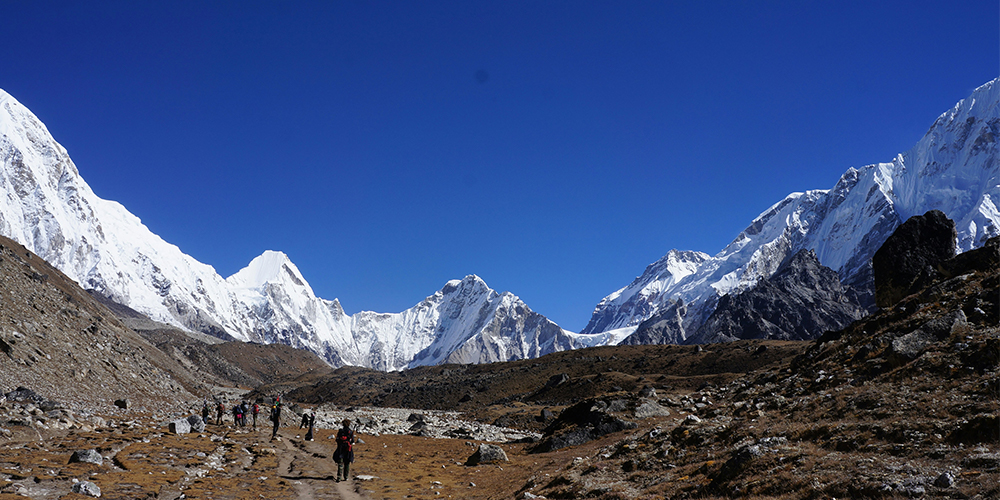
The road to Mount Everest, or the Everest Base Camp, is a legendary route that winds through the terrain of Khumbu to the foothill of the highest peak in the world, Mount Everest. The mountaineering town-villages associated with the route become part of your daily walk, traversing suspension bridges, and fade into the shroud of the Khumbu Icefall. Just when it gets a bit silly to be at an amassing height, one quiets the extraordinary views of such behemoths as Lhotse, Nuptse, and Ama Dablam, and other peaks. The trek is suitable for those trekking to their ever-growing list, seekers of fun, and those committed to spending time on the journey in an endeavor to explore the Himalayas and Nepal.
Reasons for Going:
- Stand right at the foot of Mount Everest, the world's tallest peak.
- Trek to Sherpa villages and Buddhist monasteries at high altitudes.
- Cross the glamorous suspension bridges and have a look at the Khumbu Icefall.
- A bucket list dream for adventure lovers and mountain crazies.
- Eyes feast over Everest, Lhotse, Nuptse, and Ama Dablam.
Ilam
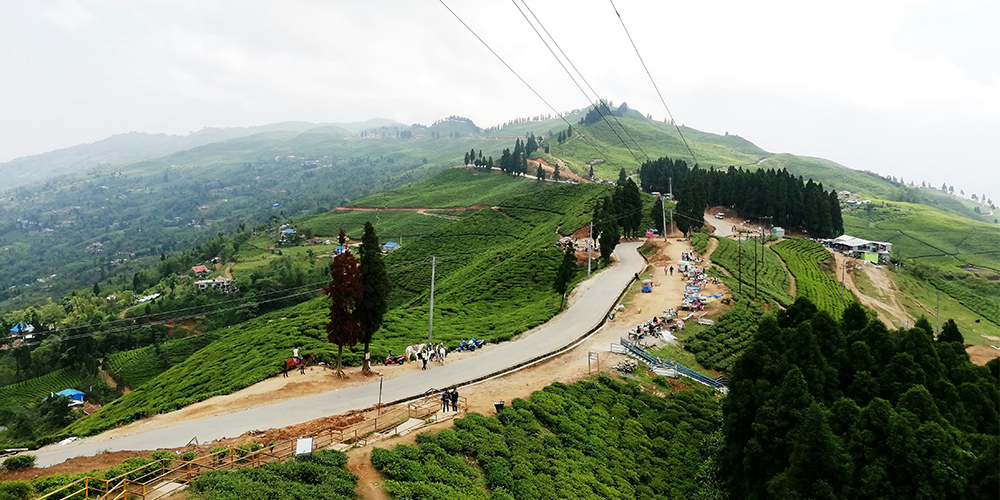
Heavenly Ilam, the "Tea Garden of Nepal," is a soft-leaf hill district situated in the eastern region. With gentle slopes holding verdant tea estates, this is the place where one may very well forget urban congestion in favor of nature in the lap of luxury. To every taste, the hill district is conducive to leisure and adventure, from sunrise viewpoints at Shree Antu to stunningly attractive landscapes and great biodiversity, being birdwatcher- and nature photographer-friendly. Ilam is a relatively untraveled yet full-featured route to consider for slow tourism in Nepal.
Reasons for Going:
- Walking through lush green tea gardens in eastern Nepal.
- Peaceful hill walks in cool weather and rolling landscapes.
- Watching the sunrise from Shree Antu, a beautiful viewpoint
- A home to flocks of birds and butterflies in the biodiverse forest of the region.
- An ideal place for slow-paced nature travel and local cultural exploration.
Bandipur
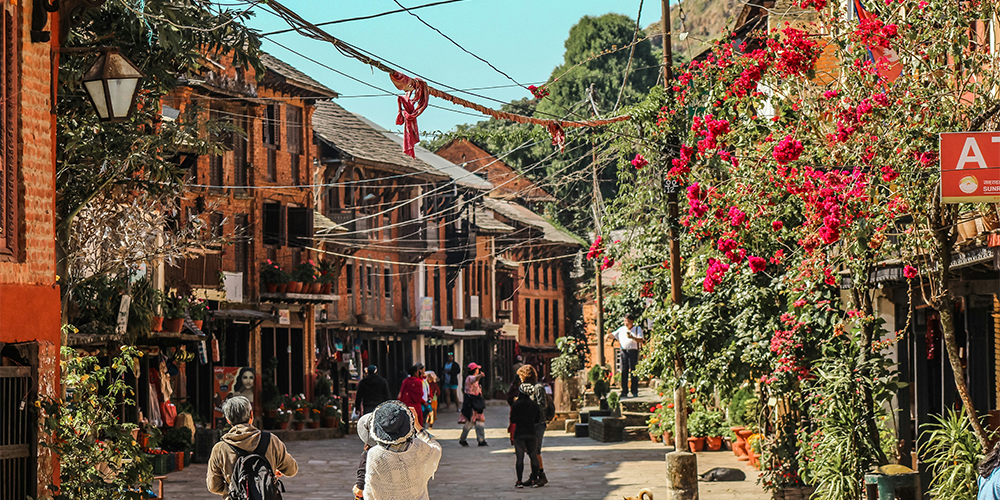
Overshadowed on the road between Kathmandu and Pokhara, Bandipur, in its original Newari glory, remains much as it was during the time of its founding, an ideal, authentic culture and nature for those who seek it. With charming cobblestone streets, heritage buildings, and peaceful surroundings, it's the contrast of the culture and the cool mountain landscapes that makes Bandipur's charm. With accessibility to views of sunrise and sunset over Annapurna, outdoor promenades, and cave expeditions, Bandipur is an expedition ritual for one who appreciates beauty in the natural as well as the man-made.
Reasons for Going:
- Himalayan view of the Annapurna, Manaslu, and Dhaulagiri ranges.
- A Newari village is well-preserved and rich in heritage.
- Those nice walks on the ridge at sunrise and sunset are graced by peaceful quiet.
- Some short walks and visits to the nearby cave would be good for exercise.
- An ideal retreat away from Kathmandu and Pokhara.
Pokhara
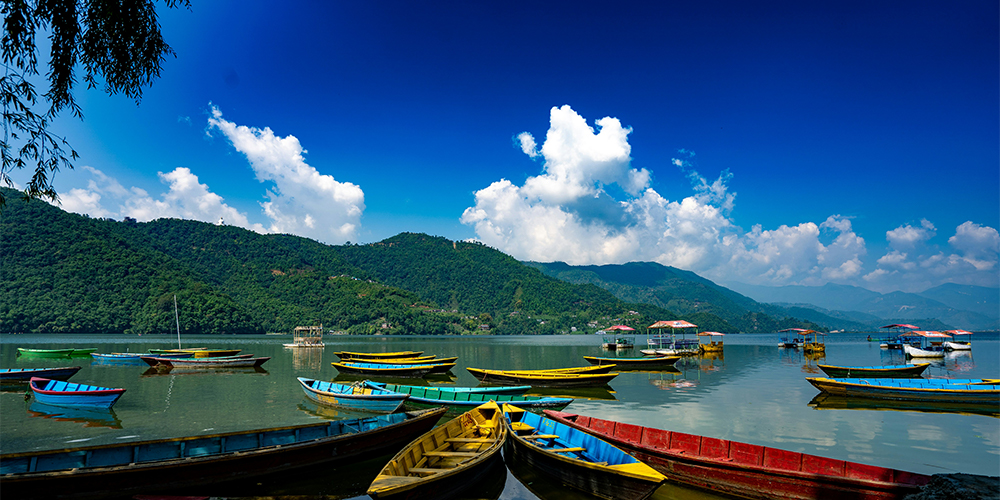
This is an adventure city about a 25-30 minute flight west from Kathmandu, resting serenely beside the pristine Phewa Lake, with a beautiful view of the Annapurna and Dhaulagiri ranges. This is the perfect base that goes on the guideline for Annapurna Region Treks, or relaxing and chilling around the lake. Boating, visiting mystical waterfalls and caves, or going paragliding out in the open space over the lake with a soaring view, all of which present Pokhara as an idyllic destination for travel in Nepal. There is a mixed option of adventure, culture, and extreme beauty in Pokhara.
Reasons for Going:
- Chill out at the serene Phewa Lake, learning the cool reflection of the Himalayas.
- Adventure sports like paragliding, zip-lining, and bungee jumping can be done.
- Visit signature locations and fall under his magic around Davis Falls, Mahendra Cave, and World Peace Pagoda.
- A trekking base in the direction of Annapurna Base Camp, Mardi Himal, and Poon Hill.
- It has a good mix of natural and modern comforts.
Langtang Valley

It is the Langtang Valley that leaves Kathmandu for a short distance before developing into a long, in any way, underrated yet spectacular region for trekking and cultural exploration. The valley is glaciated, covers blooming rhododendron forests, and traditional Tamang villages are scattered like this one. Surrounded by peaks, mostly stacked around Langtang Lirung, this trek combines all the natural wonders of the Himalayas into its world. It possesses an inimitable quality for anyone looking to trek in the less touristy areas of Nepal with a connection to nature and the rich heritage of generations.
Reasons for Going:
- One of the less crowded trekking regions in the Himalayas, only a day's drive away from Kathmandu.
- Walk alongside lakes, yak pastures, and dense pine forests fed by the glacier.
- View the stunning Langtang Lirung and other peaks that surround it.
- Discover rich Tamang culture and warm mountain hospitality.
- In addition, there are sacred sites such as Kyanjin Gompa and Langtang Glacier.
Koshi Tappu Wildlife Reserve
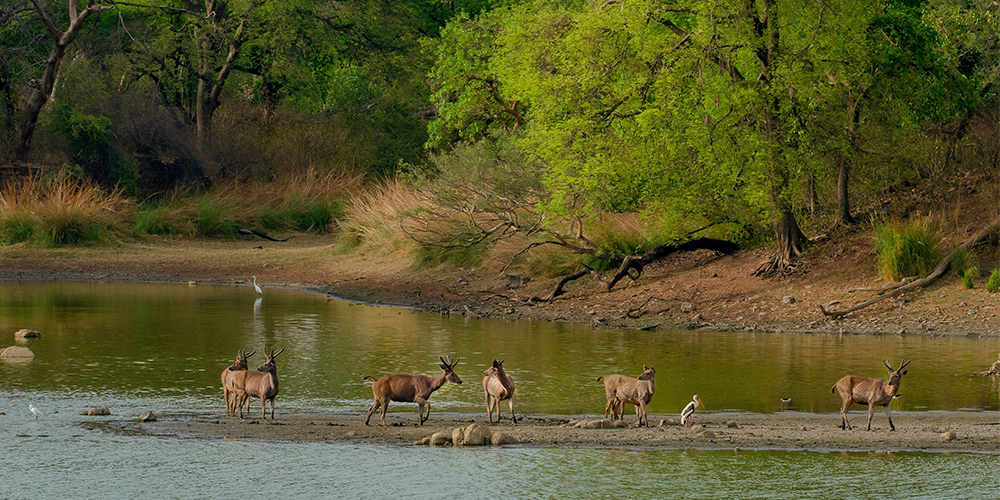
Koshi Tappu Wildlife Reserve is situated in the eastern Terai region of Nepal, and it is a paradise for all animal and bird-watchers. A protected wetland of 175 square kilometers, it boasts more than 500 species of birds, including migratory species from Siberia and the rare wild water buffalo (Arna). It is a peaceful riverine system, coupled with grasslands - heavenly for nature photography and ecotourism. Koshi Tappu is for those who want to experience what Nepal represents outside of the mountains when it comes to ecosystems.
Reasons for Going:
- Visit some of Asia’s best birdwatching places.
- Discover rare species like swamp francolin, some storks, and wild water buffalo (Arna).
- Inspecting wetlands, grasslands, and river systems in the eastern Terai.
- Excellent for all sorts of nature photography and ecotourism experiences.
- A tranquil, lesser-known wildlife alternative to Chitwan.
Phoksundo Lake (Shey Phoksundo National Park)
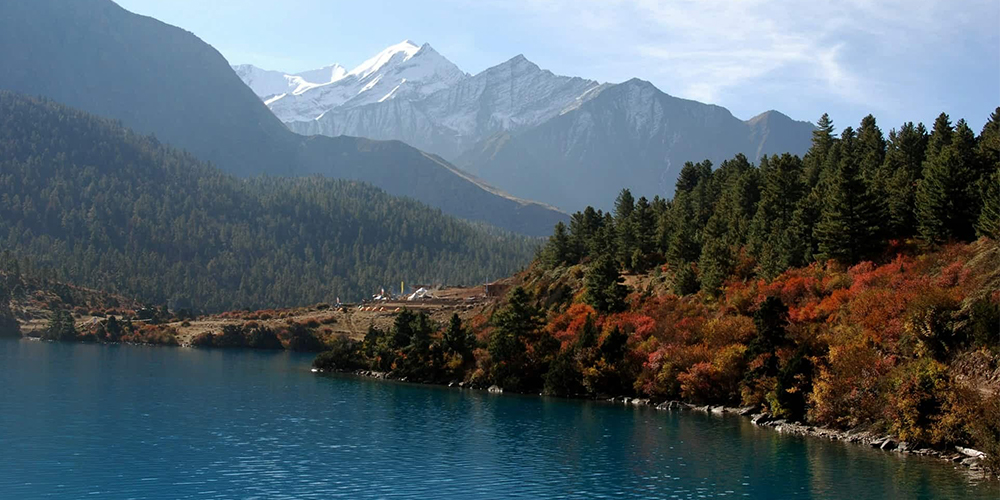
Secluded in the heart of remote and fierce Dolpa, Phoksundo Lake is one of the wonders of nature in Nepal. A lot of turquoise water, rather than being imprisoned by dry cliffs, is flanked by snow-peaked mountains surrounding beautiful Shey Phoksundo National Park with its rare flora and fauna and Bonpo monasteries. Lakhs of tourists never affect this area because it is less frequented. If people take to such a great high wilderness for an idyllic retreat, then a trek to Phoksundo is both a spiritual and a visual journey, meant for true nature lovers.
Reasons for Going:
- Come to see Nepal's most beautiful high-altitude lake with deep turquoise water.
- Trek through one of the remotest and least-touched areas in Dolpa, nestling in stark serenity.
- View arid mountain landscapes, waterfalls, and cliffside trails.
- Visit ancient Bonpo monasteries and Tibetan Buddhist villages.
- An excellent spot for spiritual solitude and adventure in the Himalayas.
Extra Natural Destinations in Nepal
Tilicho Lake
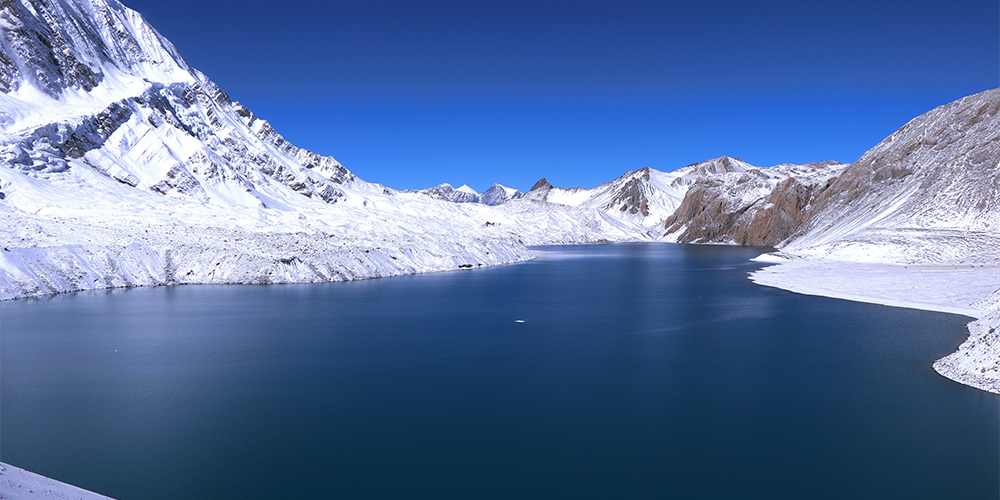
Why Go:
- Visit one of the highest lakes in the world, at an altitude of 4,919 meters
- Part of the Annapurna Circuit, giving an adventurous side trip to your trek
- Dramatic white peaks and glacier-fed valleys surround the lake
- Surreal reflection and spiritual calm prevail amidst the stark alpine setting
- A must for trekkers looking for something unique and challenging in Nepal.
Pikey Peak
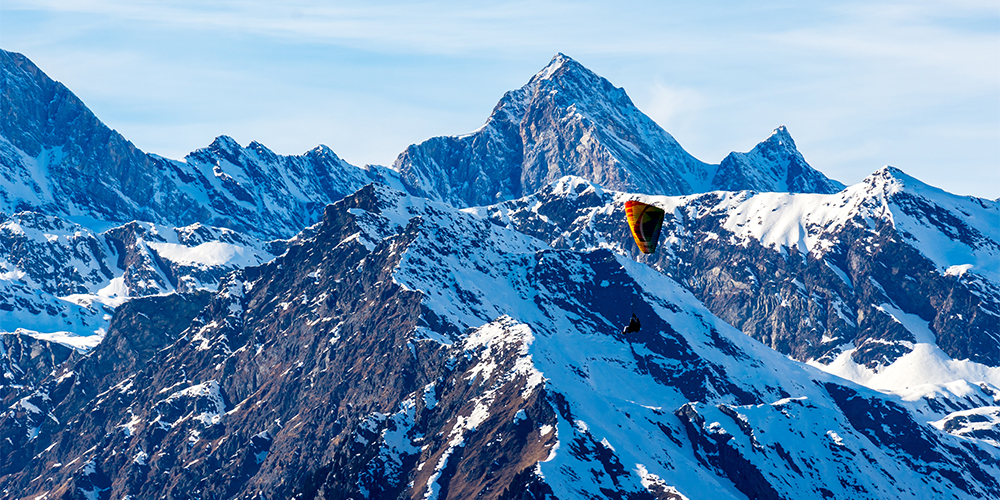
Why Go:
- Sir Edmund Hillary termed his favorite view of Mount Everest.
- The less-trodden alternative to the main Everest region treks.
- Panoramic sunrise views of Everest, Kanchenjunga, and everything in between.
- Sample the authentic Sherpa villages and Buddhist monasteries.
- It's a great short trek for those on a limited timeline to take in nature's beauty.
Khaptad National Park
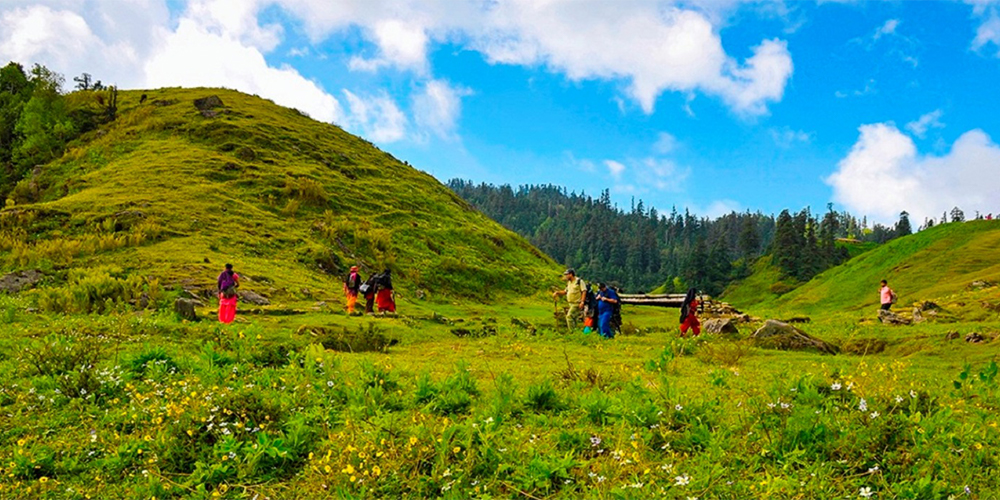
Why Go:
- Hinterlands of meadows, oak forests, and serene ridgelines.
- Rare chance to explore the untouched ecosystems of western Nepal.
- Hosts over 270 species of birds, leopards, and delicate medicinal plants.
- The site is imbued with a spiritual aura, for it was once home to Sage Khaptad Baba.
- An incredible camping, meditation, and nature photography experience.
Daman
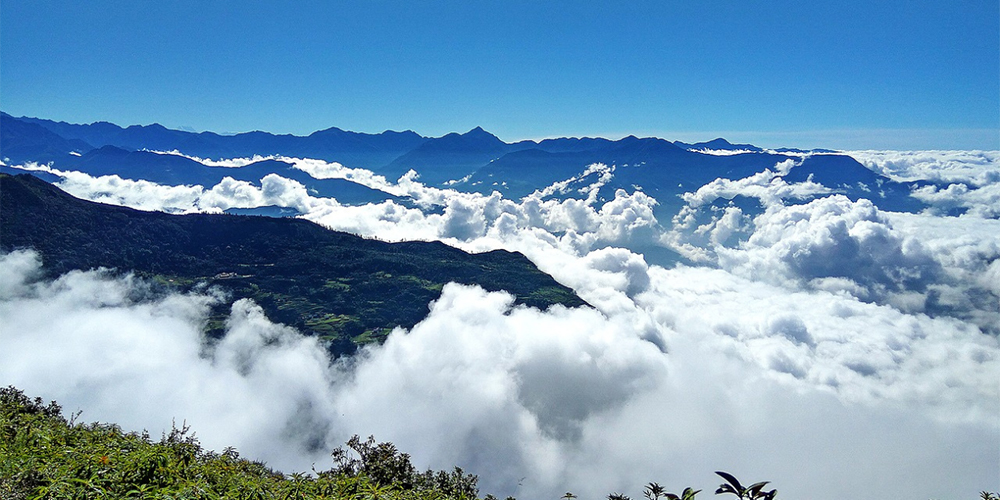
Why Go:
- Get a glimpse of Mount Everest and a panoramic view of more than 40 Himalayan peaks without trekking.
- Only a few hours ' drive from Kathmandu, it is great for short nature getaway trips.
- Visit the Daman View Tower for jaw-dropping panoramic views.
- A highlight for sunrise, sunset, and tranquil hilltop getaways.
- Ideal for family outings or laid-back nature getaways.
Best Time To Visit Nepal for Naturalists
Nepal has unique seasons, each possessing its luster and beauty. The best time to visit is mostly subjective; whoever might want trekking, wildlife adventure, or just enjoying the scenery. Here is a summary of every season for you to choose the perfect time for an adventure in this beautiful country.
Spring (March-May)
Considering coming to Nepal at some point in spring, so influenced by the glory of nature during that time. All over the country, rhododendrons are in full bloom during these months, coloring the Himalayan foothills in sunny shades of red, pink, and white. The weather is kind, the skies are clear, and it is moderately warm, one of the best trekking seasons. It could be in trekking movement towards Annapurna Base Camp, or any journey through Langtang Valley, or just being around the green surface of Pokhara, where their visibility is known to be nothing but 100 percent for mountain views. This is the time to be in such areas, as the animals would be even more active, and there is greenery at its peak, making it a good season for appreciating wildlife. It is cool, so it is great for beginner trekkers as well as experienced trekkers. It is less congested as compared to autumn. Spring is the topping of the cake, having some of the best weather with the presence of other natural beauties.
Autumn (September-November)
Emerging as the best trekking season in Nepal, autumn is blessed with views of stunning mountains against seemingly perfect clear skies. The end of the rainy monsoon has left all landscapes lush and crystal clear for trekking at high altitudes. This season has trekkers flooding to Everest Base Camp, Annapurna Circuit, and Langtang Valley to recently get the feeling of majestic peaks like Mount Everest, Annapurna, and especially Machapuchare (Fishtail). Temperatures are favorable for long treks, neither too hot nor too cold, and the weather is stable for good predictions on the trails. Not to mention that autumn is the time for several Nepali festivals, such as Dashain and Tihar, which will add cultural flair to your visit. The trails are still a little busy compared to spring, but what better time to spend with other travelers, relishing the fabulous landscapes of Nepal!
Winter (December-February)
This is winter in Nepal and thus offers relatively quieter trekking, as even the mountains seem to be empty of the noise of the thousands of visitors usually around there. Yes, very cold at times, especially at the higher altitudes, but this makes for some awesome conditions for photography and mountain views with crisp, clear air and blue skies. It opened up with lower-altitude treks like this, from areas such as the valley of Kathmandu to Pokhara, during this season. Although most treks are limited by the subzero temperatures, high treks like Everest Base Camp or the Annapurna Circuit don't offer much. You could get some of the best views that one can imagine of snow-clad peaks and utterly deserted surroundings if you are ready to face the chill. The regions are quiet during the winter season, which makes this time perfect for a more personal, contemplative sort of experience. This season will be appreciated by people who travel during the off-season and those who have the necessary equipment for a colder climate. This is the time when one sees Nepal's clear beauty in winter.
Monsoon (June–August)
Monsoons in Nepal are generally wet and heavy rains that bring misery in the higher altitudes, where most of the trails become slippery and prone to landslides. Yet, it makes forests and valleys become a paradise of a new, lush tropical world in the whole of Nepal. This is the best season if you want to enjoy the rainforests, wetlands, and riverine landscapes at places such as Koshi Tappu Wildlife Reserve or Chitwan National Park, where the wildlife is rich and the environment is lush. Monsoon also happens to reduce traffic, so if you prefer visiting when it's not crowded, this time could be unique for you. However, the monsoon season is certainly not the time for any high-altitude trekking because of the dangers of landslides on trails and poor visibility from the details of unending rain. For those willing to visit less crowded areas or enjoy Nepal's rivers, lakes, and wildlife, they'll still find the monsoon season quite refreshing.
Conclusion
It is more an experience of spirituality and nature than simply a destination, joining the serenity of hidden Rara Lake and towering peaks of Everest. Nature lovers have trails, lakes, and forests that tell stories waiting to be relived. Be it adrenaline, peace, or wonder, a soul-stirring journey is fulfilled in Nepal.
Good Vibes Adventure organizes memorable adventures to connect with nature in Nepal. Our expert guides, environmentally friendly travel, and custom itineraries will ensure the most meaningful exploration of the Himalayas possible.
So, pack your bags and grab your curiosity; let Nepal take your breath away.
FAQs
When does nature get optimum naturalness in traveling to Nepal?
This spring and then autumn are the best times to visit Nepal for natural sightseeing, from March to May and then from September to November. The skies are clear, and the temperature is pleasant during this period. These four months are excellent for trekking and wildlife ventures. Winter, from December to February, remains a time of isolation for the traveler, while the summer monsoon months from June to August bless the nation with greenery and veil the mountains.
Is it necessary to hire a guide for trekking in Nepal?
Together with regard for safety or navigation, that is also acceptance and support for local communities through responsible tourism. Trekking is not mandatory for all trekking, but it is strongly advised for the aforementioned, rather hidden, obscure, and high-altitude trekking destinations, especially Everest Base Camp, Annapurna Base Camp, or Langtang Valley.
What should I pack for a nature trip to Nepal?
Wear clothes in layers because the weather suddenly keeps on changing. A down jacket and thermal would be necessary along with waterproof trekking shoes, a daypack, and a water bottle or two reusable water bottles. Putting on sunscreen is a must, as well as carrying some first aid kit, among others. If you're not sure, there are packing lists on Good Vibes Adventure that apply to every trip.
Eco-friendly accommodation in Nepal?
Truly! Eco-lodges, teahouses, and homestays that promote sustainable forms of energy, organic farming, etc., are currently one of the major advancements going on in Nepal. Good Vibes Adventure searches for lodgings that are eco-friendly themselves and that also serve to better local communities while minimizing adverse impacts to the environment.
Is wildlife watching secure in Nepal's national parks?
Safety is ensured when done by the book with a licensed guide. Jungle safaris are offered in both Chitwan National Park and Bardia National Park, searching for rhinos and elephants, tigers, and several other bird species, which come into the hundreds. Always pay heed to the instructions of your guide and respect wildlife at a distance.
List some hidden natural paradises that can be experienced in Nepal.
Pikey Peak, Rara Lake, Shey Phoksundo, Khaptad National Park, and Tilicho Lake are such places that need to be experienced: the value of such places is great by themselves. Bumble away from the popular tourist routes and take in the experience of these hidden treasures whose names ring true. From then on, the true pristine beauty of the Himalayas comes to be realized along with the authentic cultural experience.
How to book a nature tour in Nepal?
You can book a custom nature or trekking trip at Good Vibes Adventure. We prepare expert local guides and eco-friendly accommodation for you, in addition to a 100 percent custom-tailored itinerary according to your interests, whether trekking, wildlife, or photography focused.

